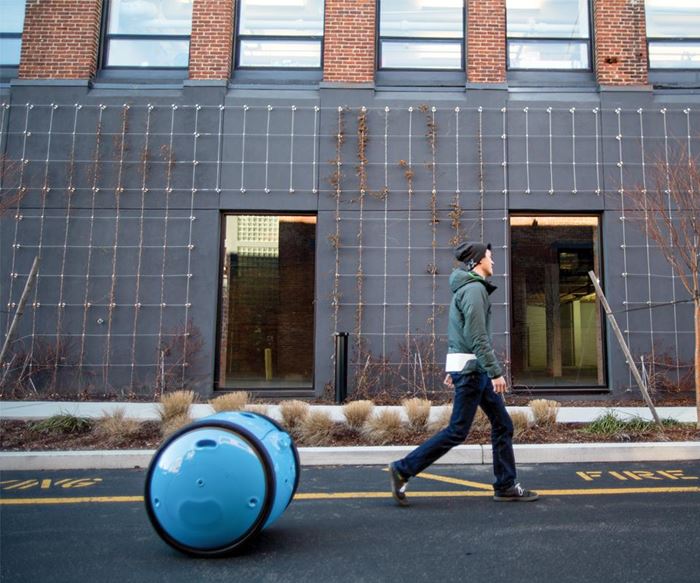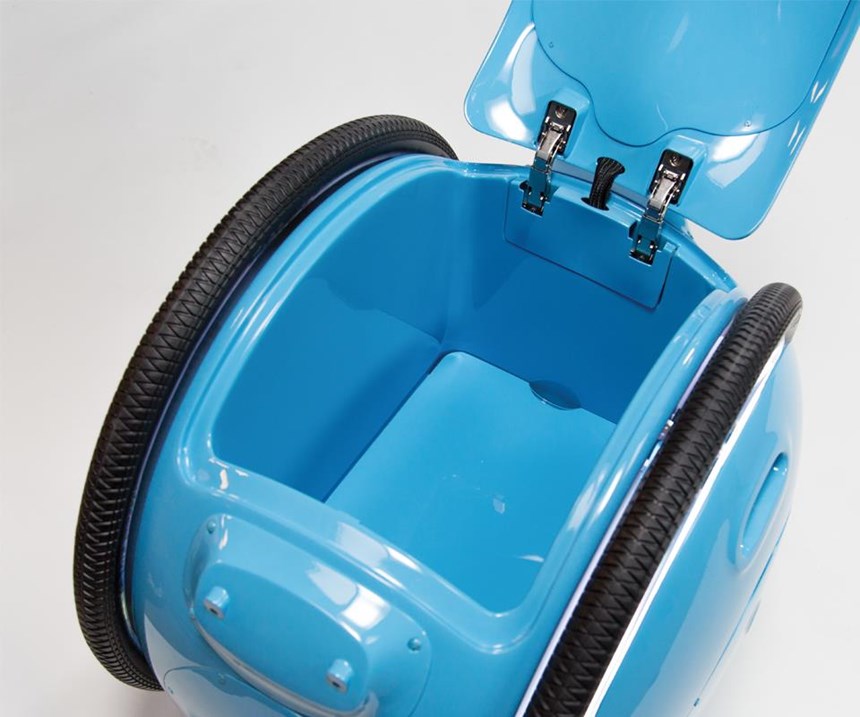Composites in transit: Rolling robotic “stuff carrier” the new must-have
PPF’s Gita can move at a human walking pace or can accelerate up to 35 kph, fast enough to keep pace with a runner.
Share
Read Next
What should hip urban dwellers do when they need to pick up a week’s groceries or carry a big briefcase of documents home from the office, but don’t own a car and can’t find a taxi or Uber (or an aerial drone)? Piaggio Fast Forward (PFF, Boston, MA, US) could have the answer. Founded in 2015 by the Piaggio Group, the maker of the iconic Vespa motor scooter and other two- and three-wheeled vehicles, PPF’s stated goal is to “create lightweight, intelligent and autonomous mobility solutions for people and goods.” Architectural composites innovator Greg Lynn, PFF’s co-founder and chief creative officer, saw a trend: “People were moving less, and more things were being brought to them. We see an alternative vision, where robotic solutions can help people move more, by carrying and following. It makes your hands free so you can do more with your hands, and you can walk or run further, longer.”
The first PFF product prototype, introduced in February of this year, is the Gita (pronounced “gee-ta,” Italian for “short trip”). Gita is a 0.67m diameter, smart, wheeled robotic cargo vehicle, with an 18-kg payload. Equipped with an optical detection system and sensors, it creates a three-dimensional map of its surroundings, with waypoints, while following a human, who wears a camera device. Once Gita knows a route, it can operate autonomously in some environments or in a convoy mode with other Gita devices, or in tandem with the Kilo, a larger PPF-designed robotic vehicle that has a 91-kg capacity.
Instead of streets filled with autonomous cars, PFF imagines people walking, biking or skating with their robots handling the heavy lifting. PPF’s Gita (pictured above) can move at a human walking pace or can accelerate up to 35 kph, fast enough to keep pace with a runner.
Lynn tells CW that PFF is currently building high-performance working prototypes of the Gita, and can’t yet discuss its industrialized production plans. But the company has built 12 prototypes, the first six in carbon fiber and six more in carbon fiber/fiberglass. Prototype composite tooling was created by Symmetrix Composite Tooling (formerly mould-CAM US, Bristol, RI, US) from machined foam patterns for the cylinder barrel, the domed cylinder ends, and cargo area or “column.” Parts were wet-laminated and vacuum-consolidated, some by New England Boatworks (Portsmouth, RI, US) and the rest by PFF, in-house. “We switched to fiberglass cover panels and cargo structure for the newer prototypes because we needed to have better transmission through areas of the vehicle for the electrical signals,” says Lynn.
Almost all other details, mounts and additional parts that bond to Gita’s body or structure are 3D-printed, carbon-reinforced nylon parts (some with chopped and others with continuous carbon fiber) built with in-house Markforged (Somerville, MA, US) printers, and other printers that also use chopped fiber in nylon, says Lynn. “We were able to very rapidly build working prototypes at a very high quality and with the weight and strength of production parts by working with the composites industry in the Bristol, RI area,” he adds, “as well as using the robotics we have in-house to make our own CNC-shaped molds and laminating our own parts in-house.”
Related Content
Carbon fiber, bionic design achieve peak performance in race-ready production vehicle
Porsche worked with Action Composites to design and manufacture an innovative carbon fiber safety cage option to lightweight one of its series race vehicles, built in a one-shot compression molding process.
Read MoreLarge-format 3D printing enables toolless, rapid production for AUVs
Dive Technologies started by 3D printing prototypes of its composite autonomous underwater vehicles, but AM became the solution for customizable, toolless production.
Read More3D-printed CFRP tools for serial production of composite landing flaps
GKN Aerospace Munich and CEAD develop printed tooling with short and continuous fiber that reduces cost and increases sustainability for composites production.
Read MoreJeep all-composite roof receivers achieve steel performance at low mass
Ultrashort carbon fiber/PPA replaces steel on rooftop brackets to hold Jeep soft tops, hardtops.
Read MoreRead Next
Plant tour: Daher Shap’in TechCenter and composites production plant, Saint-Aignan-de-Grandlieu, France
Co-located R&D and production advance OOA thermosets, thermoplastics, welding, recycling and digital technologies for faster processing and certification of lighter, more sustainable composites.
Read MoreAll-recycled, needle-punched nonwoven CFRP slashes carbon footprint of Formula 2 seat
Dallara and Tenowo collaborate to produce a race-ready Formula 2 seat using recycled carbon fiber, reducing CO2 emissions by 97.5% compared to virgin materials.
Read More“Structured air” TPS safeguards composite structures
Powered by an 85% air/15% pure polyimide aerogel, Blueshift’s novel material system protects structures during transient thermal events from -200°C to beyond 2400°C for rockets, battery boxes and more.
Read More
























